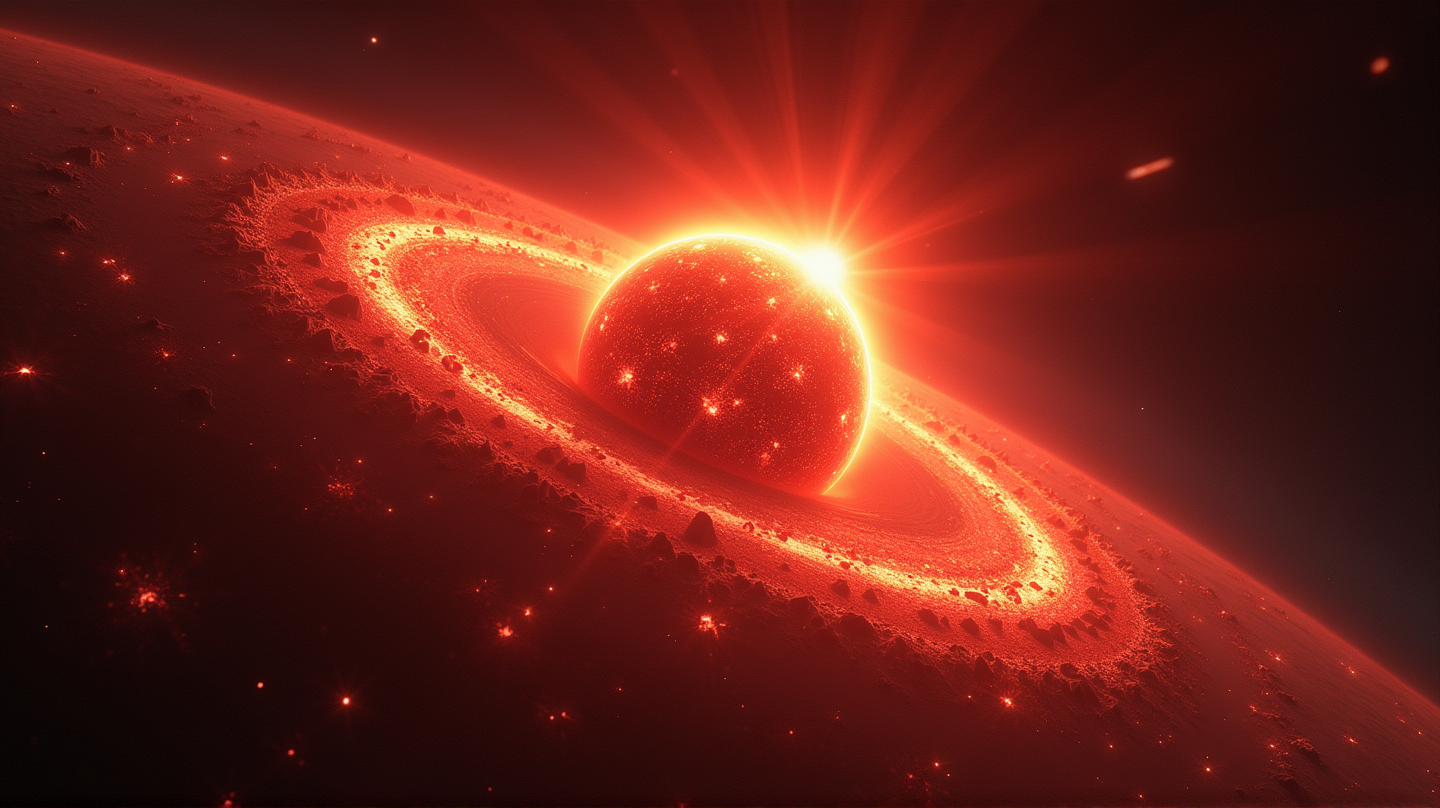James Webb Telescope's Groundbreaking Find: A Cosmic Debris Ring
The James Webb Telescope stuns the scientific community with its discovery of a debris disk around a nearby red dwarf, marking a leap in planetary research.

The cosmos continues to unravel its mysteries as an international team of astronomers unveils a new discovery, demonstrating the remarkable capabilities of the James Webb Space Telescope (JWST). Their latest findings shed light on the TWA 20, a humble nearby red dwarf, enshrouded by a fascinating ring of cosmic debris.
A Groundbreaking Discovery
As luminous planets and distant stars captivate our imaginations, there’s an understated beauty lying in the cold dust and rocky remnants circling nascent stars. This time, the JWST, a marvel of modern technology, has turned its eyes toward TWA 20, a dim brown dwarf residing 261 light-years away from our abode. The repercussions ripple through the scientific community as a debris disk—an echo of the star’s youthful days—encircles it.
Unraveling the Mystique of Debris Disks
Debris disks, a celestial labyrinth of asteroids, comets, and dust, mark a phase where new worlds are yet to solidify. “These intricate formations guide our understanding of planetary development,” scientists at the University of California, Santa Barbara assert. The near-infrared camera aboard the JWST has meticulously recorded this cosmic spectacle, drawing a comprehensive map of the celestial debris orbiting TWA 20.
A Glimpse into the Past
At a mere 10 million years old, TWA 20 is a relative newcomer in stellar terms. Icelandic by traditional lore and inclination at 70.1 degrees, its celestial ring stretches across a 64.7 AU radius, donning a brightness akin to its cosmic counterparts. The telescope’s unrivaled precision allows scientists to paint an intimate portrait of this stellar structure.
The Silent Puzzle
Yet, much remains to be unfolded. Efforts to track disturbances within the disk—perhaps crafted by massive companions akin to Jupiter’s silhouette—have resulted in silence. Such findings propel our hunger for knowledge forward. The JWST’s ongoing quest exemplifies our relentless spirit in overcoming the challenges of observing these dim and elusive entities.
A Testament to Technological Ingenuity
Such discoveries reaffirm the JWST’s role as a trailblazer, pushing the limits imposed by ground-based observations. It provides a golden key to unlock the mysteries of distant worlds and their embryonic dresses. According to Universe Space Tech, advancements in astronauts’ toolkit, like the JWST, mark our journey into the unknown not as futile wanderings but as deliberate steps to unseen horizons.
As scientists turn the metaphoric page, TWA 20 becomes more than a twinkling star in deep space; it represents a beacon of hope in our unending cosmic journey.
Be part of this expedition, and let the James Webb Space Telescope’s discoveries illuminate the boundless wonders lying beyond our night sky.

